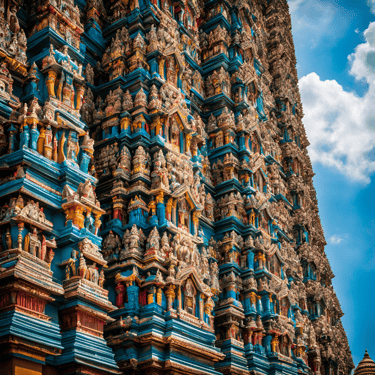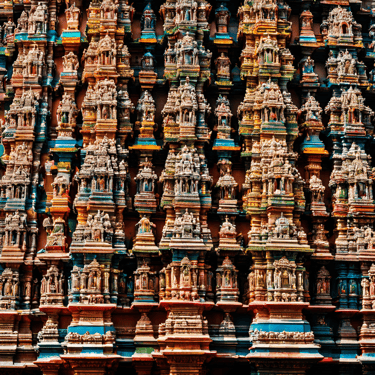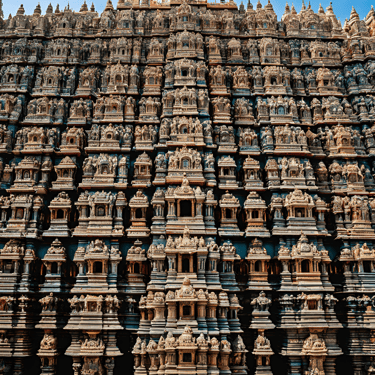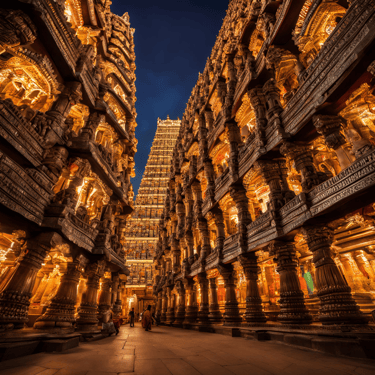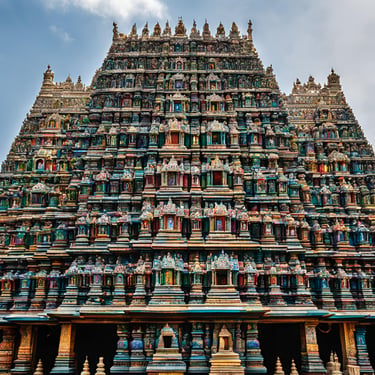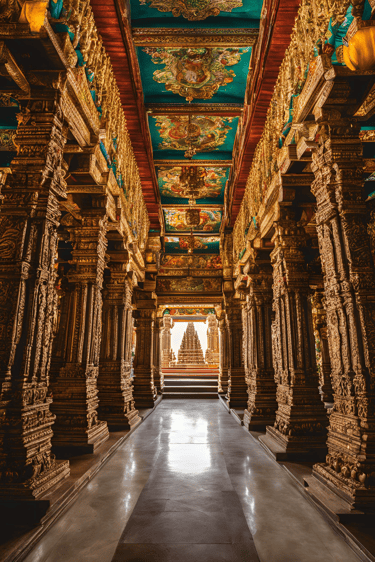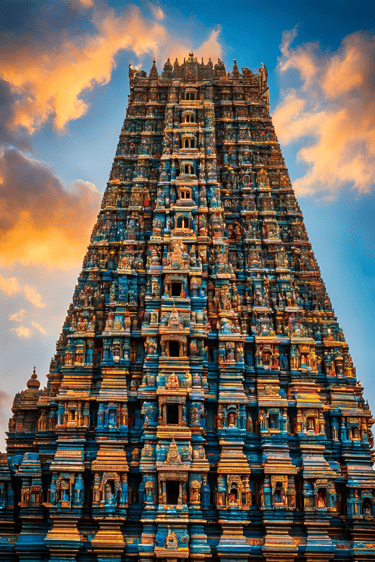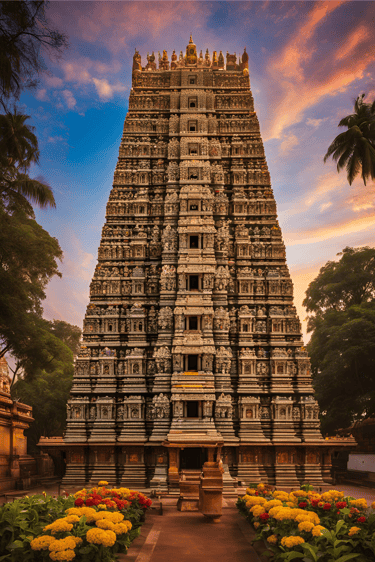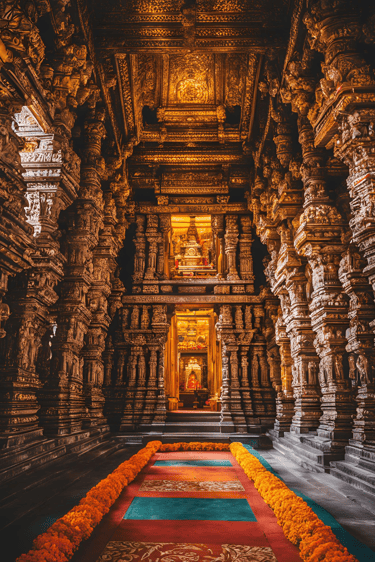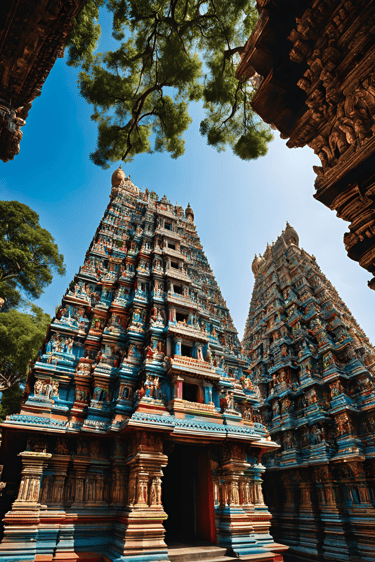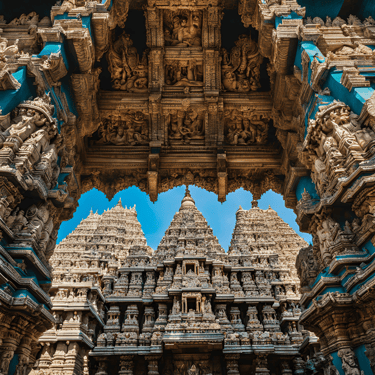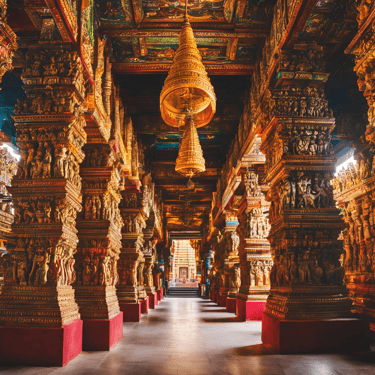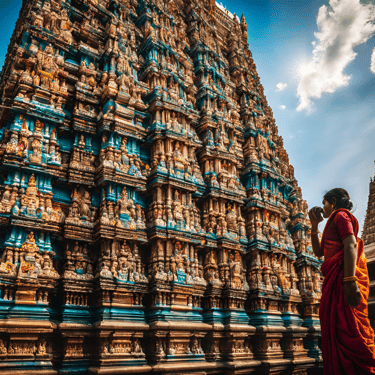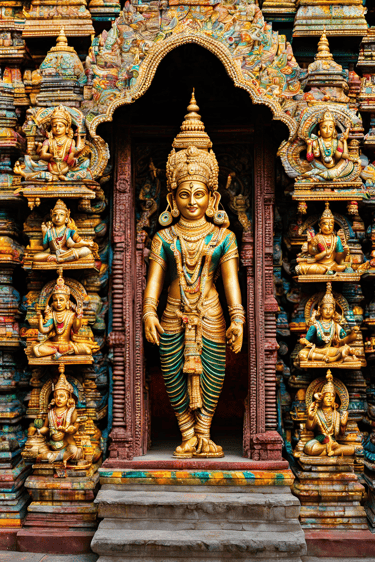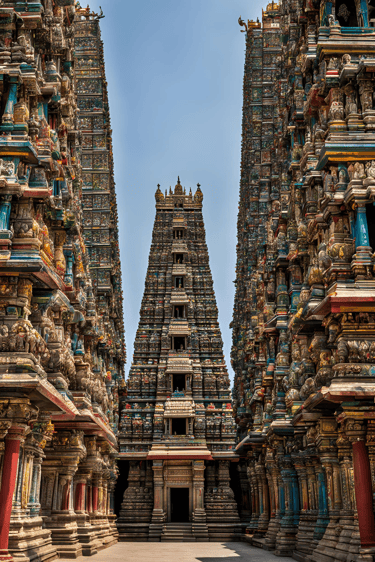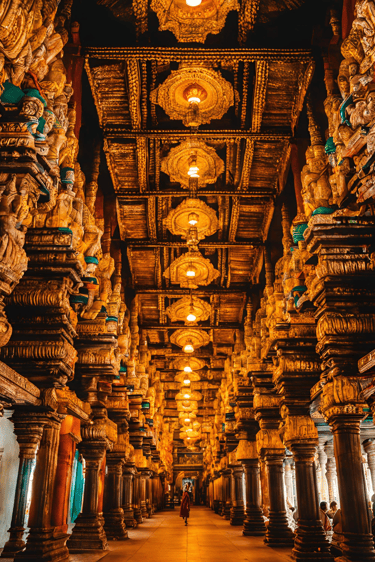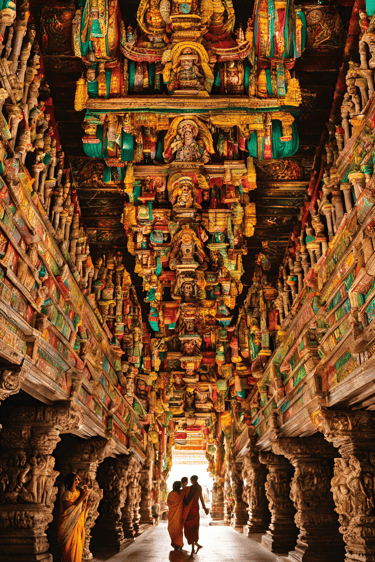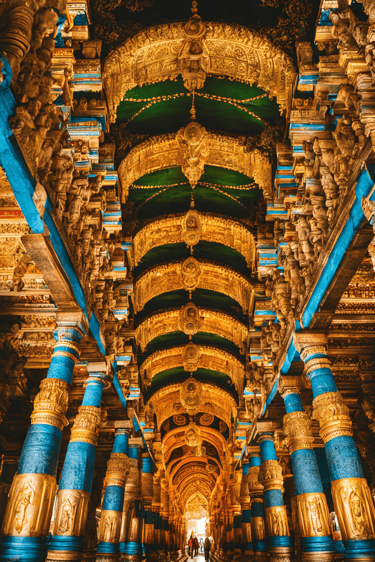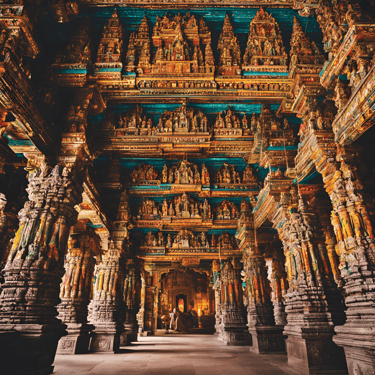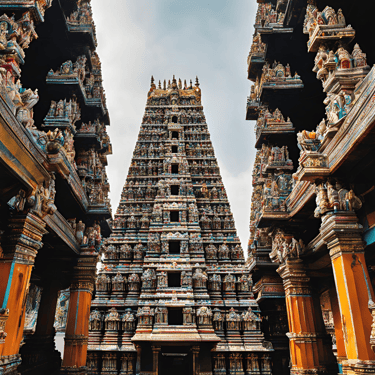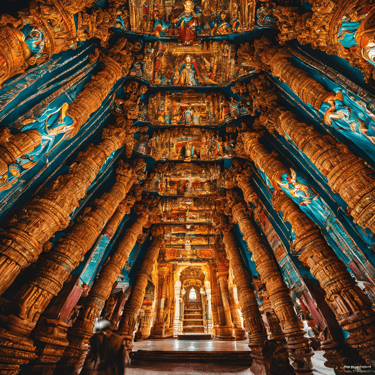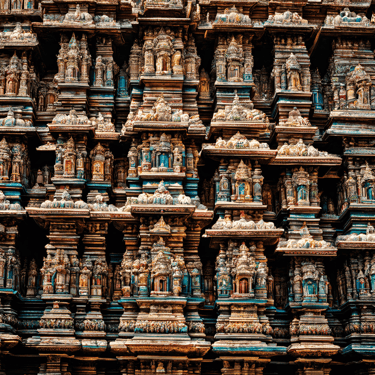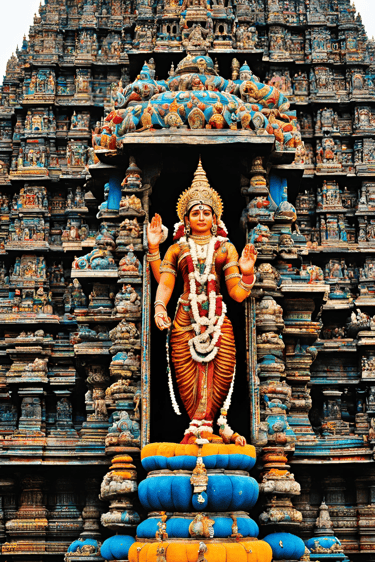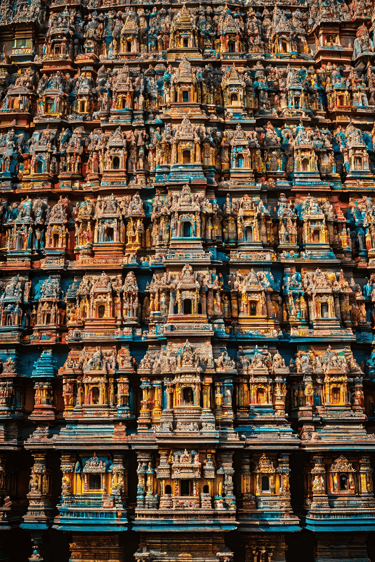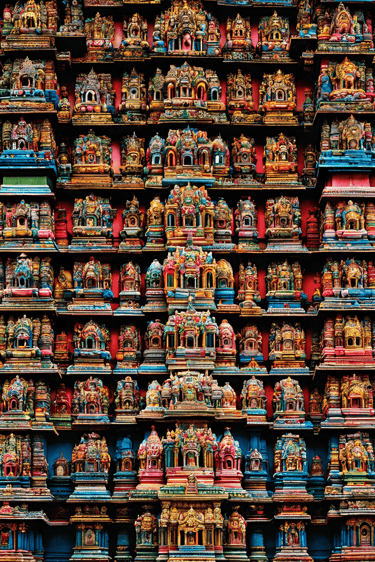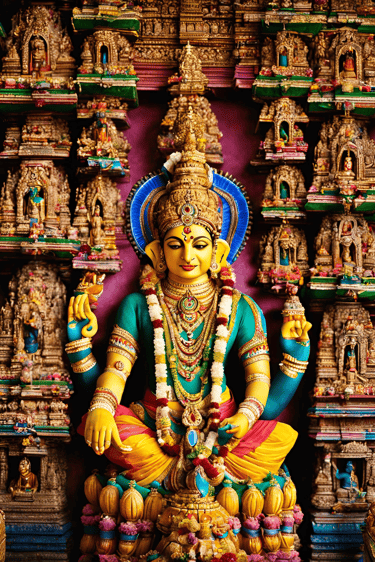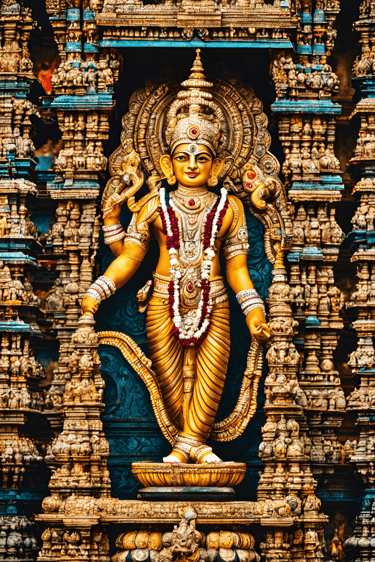
Meenakshi Temple: A Majestic Marvel in Madurai, Tamil Nadu
The Life and Legacy of Khwaja Moinuddin Chisht
Meenakshi Temple: A Majestic Marvel in Madurai, Tamil Nadu
The Meenakshi Amman Temple, situated in the historic city of Madurai, Tamil Nadu, is one of the most iconic and architecturally stunning temples in India. Dedicated to Goddess Meenakshi (a form of Goddess Parvati) and her consort Lord Sundareswarar (a form of Lord Shiva), this ancient temple is a vibrant testament to the Dravidian style of architecture. Known for its magnificent gopurams (towering gateways), intricately carved sculptures, and rich cultural heritage, the Meenakshi Temple is not just a place of worship but also a symbol of the spiritual and cultural grandeur of South India.
A Glimpse into History
The origins of the Meenakshi Temple date back over 2,500 years, making it one of the oldest temples in India. The temple's mythological roots are intertwined with the legend of King Malayadwaja Pandya and his queen, who prayed for a child and were blessed with a divine daughter, Meenakshi. According to legend, Meenakshi was an incarnation of Goddess Parvati, who later married Lord Sundareswarar (Lord Shiva), signifying the divine union of the deities. The city of Madurai is believed to have been built around the temple, which has remained a focal point of religious and cultural life ever since.
The temple, as we see it today, was largely constructed during the 14th to 17th centuries under the patronage of the Nayak Dynasty, especially King Thirumalai Nayak. He was instrumental in expanding and beautifying the temple complex, adding to its architectural grandeur. The Meenakshi Temple is now recognized as one of the most significant monuments in Tamil Nadu and is a major pilgrimage site in India.
Architectural Grandeur of the Meenakshi Temple
The Ajmer Sharif Dargah is a stunning example of Mughal architecture, built with a blend of white marble and red sandstone. The shrine complex is an intricate labyrinth of courtyards, gates, and domes, showcasing the artistic excellence of Mughal craftsmanship. Some key features of the Dargah include:
The Meenakshi Amman Temple is renowned for its Dravidian architecture, with grand gopurams, pillared halls, and ornate carvings. The temple covers a sprawling area of about 15 acres, making it one of the largest temple complexes in India.
• The Gopurams (Towering Gateways): The temple is encircled by 14 gopurams, including two golden gopurams for the main deities, Meenakshi and Sundareswarar. The tallest gopuram, known as the South Tower, stands at a height of 170 feet and is adorned with thousands of colorful sculptures depicting gods, goddesses, demons, and mythical creatures. These vibrant gopurams are a visual treat, capturing the essence of Tamil artistry.
• The Sanctum Sanctorum: The temple houses two main sanctums, one dedicated to Goddess Meenakshi and the other to Lord Sundareswarar. The inner sanctums are beautifully decorated with gold-plated vimanams (rooftops) and are accessible only to priests. The idol of Goddess Meenakshi, depicted with a parrot in one hand and a bouquet of flowers in the other, is an exquisite example of traditional South Indian sculpture.
• The Hall of Thousand Pillars (Ayiram Kaal Mandapam): One of the most awe-inspiring sections of the temple is the Hall of Thousand Pillars. This hall, constructed in the 16th century, actually has 985 intricately carved pillars, each depicting different mythological scenes and deities. The pillars are arranged in such a way that they create a stunning optical illusion, leaving visitors mesmerized by their craftsmanship.
• The Golden Lotus Tank (Porthamarai Kulam): The temple complex also includes the sacred Golden Lotus Tank, where devotees perform ritual bathing before entering the main shrine. According to legend, the tank was blessed by Lord Shiva, and its water is considered to have healing properties. Beautifully carved corridors surround it and serves as a venue for temple festivals and rituals.
Spiritual and Cultural Significance
The Meenakshi Temple is not only a religious hub but also a cultural center that celebrates the rich traditions of Tamil Nadu. The temple is dedicated to Goddess Meenakshi, the presiding deity of Madurai, who is revered as the goddess of fertility, love, and strength. Lord Sundareswarar, her consort, represents the divine masculine energy.
• Worship and Rituals: The temple is a vibrant center of religious activity, with daily rituals, poojas, and ceremonies performed in honor of the deities. The temple follows a strict schedule of six daily poojas, starting with the early morning Thiruvanandal Pooja and concluding with the Ardhajama Pooja at night.
• The Celestial Wedding (Meenakshi Thirukalyanam): One of the most significant festivals celebrated at the temple is the Meenakshi Thirukalyanam, the divine wedding of Goddess Meenakshi and Lord Sundareswarar. This grand event is part of the Chithirai Festival, which attracts thousands of devotees and tourists from around the world. The festival is marked by colorful processions, elaborate rituals, and cultural performances, making it a spectacular celebration of devotion and tradition.
Other Highlights of the Meenakshi Temple
1. The Musical Pillars: In addition to the Hall of Thousand Pillars, the temple is famous for its musical pillars that produce different musical notes when struck. These pillars are a testament to the advanced knowledge of acoustics possessed by ancient Tamil architects.
2. The Temple Art Gallery: The corridor around the Hall of Thousand Pillars serves as an art gallery, showcasing the rich heritage of Tamil Nadu. It displays a wide array of sculptures, paintings, and antique artifacts, offering a glimpse into the artistic excellence of the region.
3. The Temple Market: Surrounding the temple are bustling markets where visitors can shop for traditional Madurai silk, jewelry, handicrafts, and religious souvenirs, adding to the overall cultural experience.
Tips for Visiting the Meenakshi Temple
• Best Time to Visit: The temple is open year-round, but the best time to visit is during the winter months (October to March) when the weather is pleasant. If you wish to experience the grandeur of temple festivals, plan your visit during the Chithirai Festival in April.
• Dress Code: Visitors are expected to dress modestly, covering their shoulders and knees. Both men and women are advised to wear traditional attire like sarees, dhotis, or long skirts.
• Photography: Photography is allowed in the outer corridors and temple complex but is strictly prohibited inside the sanctum sanctorum.
• Entry Fee and Timings: The temple is open from 5:00 AM to 12:30 PM and 4:00 PM to 9:30 PM. There is no entry fee, but visitors can make voluntary donations for temple maintenance.
• Guided Tours: To truly appreciate the architectural and historical significance of the Meenakshi Temple, consider hiring a local guide who can provide detailed insights into the temple's legends, rituals, and art.
